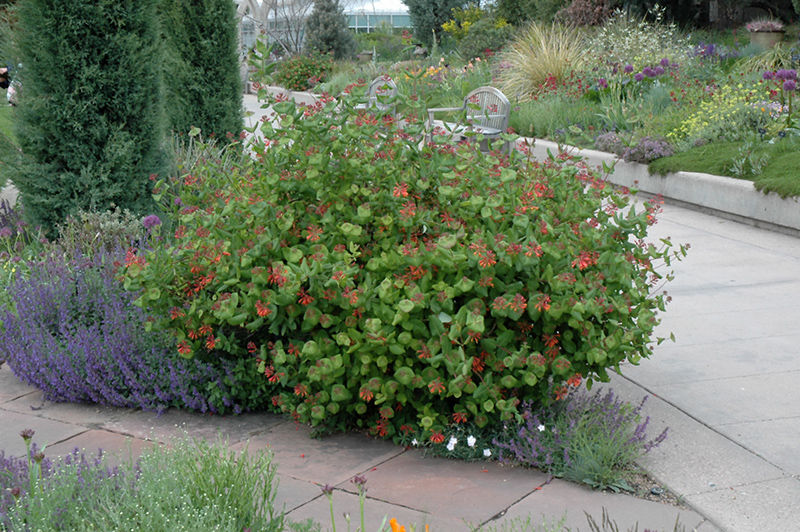Dropmore Scarlet Trumpet Honeysuckle
Lonicera x brownii 'Dropmore Scarlet'
Height: 20 feet
Spread: 24 inches
Sunlight:
![]()
Hardiness Zone: 2b
Other Names: Brown's Honeysuckle
Description:
An extremely hardy vine valued for its showy scarlet-red tubular flowers over a very long period; very easy to grow and not excessively aggressive, a great choice for arbors and trellises
Pollinator Friendly Plants
Have your garden come alive and buzzing with activity with these pollinator friendly plant options. Look for plants tagged with this promotion title: "Pollinator Friendly Plants" to add to your garden. You can also look for pollinator plants by scrolling to the bottom of each plant page and looking for the "butterfly" symbol. Click "Learn more about this promotion!" for some more inspiration and articles from one of our growers, Monrovia!
Learn more about this promotion!
Ornamental Features
Dropmore Scarlet Trumpet Honeysuckle features showy clusters of scarlet trumpet-shaped flowers with cherry red overtones and orange throats at the ends of the branches from late spring to mid summer. It has green deciduous foliage. The oval leaves do not develop any appreciable fall color. However, the fruit can be messy in the landscape and may require occasional clean-up.
Landscape Attributes
Dropmore Scarlet Trumpet Honeysuckle is a multi-stemmed deciduous woody vine with a twining and trailing habit of growth. Its relatively coarse texture can be used to stand it apart from other landscape plants with finer foliage.
This woody vine will require occasional maintenance and upkeep, and is best pruned in late winter once the threat of extreme cold has passed. It is a good choice for attracting butterflies and hummingbirds to your yard. It has no significant negative characteristics.
Dropmore Scarlet Trumpet Honeysuckle is recommended for the following landscape applications;
- Hedges/Screening
- General Garden Use
Planting & Growing
Dropmore Scarlet Trumpet Honeysuckle will grow to be about 20 feet tall at maturity, with a spread of 24 inches. As a climbing vine, it tends to be leggy near the base and should be underplanted with low-growing facer plants. It should be planted near a fence, trellis or other landscape structure where it can be trained to grow upwards on it, or allowed to trail off a retaining wall or slope. It grows at a medium rate, and under ideal conditions can be expected to live for approximately 20 years.
This woody vine should only be grown in full sunlight. It does best in average to evenly moist conditions, but will not tolerate standing water. It is not particular as to soil type or pH. It is highly tolerant of urban pollution and will even thrive in inner city environments. Consider applying a thick mulch around the root zone in winter to protect it in exposed locations or colder microclimates. This particular variety is an interspecific hybrid.


